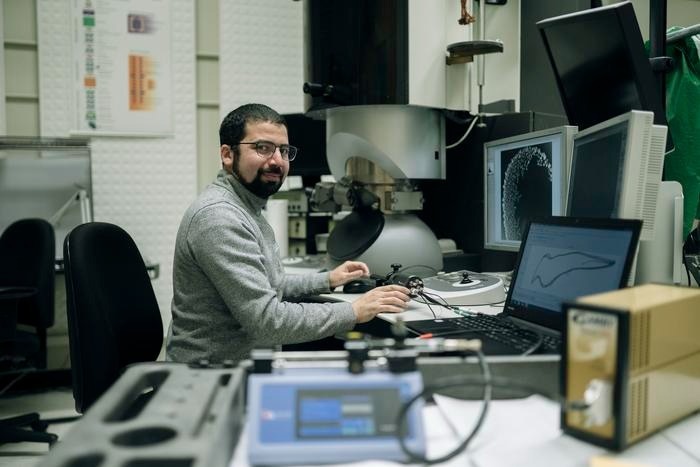Consider it nanoscale recycling, an enticing electrochemical method that can sequester carbon before it becomes air pollution and repurpose it into the constituents of consumer goods.
 McMaster University researcher Ahmed Abdellah at work in the Canadian Centre for Electron Microscopy. Image Credit: Jessie Park, McMaster University
McMaster University researcher Ahmed Abdellah at work in the Canadian Centre for Electron Microscopy. Image Credit: Jessie Park, McMaster University
With the help of computational chemistry specialists at Copenhagen’s Danish Technical University, a team of researchers at McMaster University has discovered exactly how and where the process stalls, giving rise to a renewed push to extract airborne carbon dioxide from industrial waste and turn it into fuel and plastics.
The goal of the study was to find out why carbon dioxide conversion and catalysis by synthetic materials break down too rapidly to be useful in industrial settings.
The researchers were able to record the chemical reaction at the nanoscale, or billionths of a meter, using incredibly potent magnification equipment at the Canadian Centre for Electron Microscopy (CCEM), which is located on the McMaster University campus. This allowed them to study the conversion process as well as comprehend how the catalyst degrades under operating conditions.
Ahmed Abdellah, the lead author, used an electrochemical reactor small enough to operate under the center’s electron microscopes to spend years establishing the tools that allowed for process observation.
It is exciting for us that this is the first time anyone has been able to look at both the shapes of these structures and their crystal structures, to see how they evolve at the nanoscale.
Ahmed Abdellah, Study Lead Author and Postdoctoral Fellow, Canadian Centre for Electron Microscopy
Higgins, a corresponding author of the study published in the journal Nature Communications, believes that by diverting carbon dioxide from waste streams and using it to make useful products instead of producing it from fossil fuels, the new information will help the global effort to reduce carbon pollution.
What we have found is that catalysts that can convert carbon dioxide into fuels and chemicals restructure quite rapidly under operating conditions. Their structures change and their properties change, right before our very eyes. That dictates how efficient they are at converting carbon dioxide and how long they last. The catalysts eventually degrade and stop working and we want to know why they do that and how they do that so that we can develop strategies to improve their operational lifetimes.
Drew Higgins, Study Corresponding Author and Assistant Professor, Department of Chemical Engineering, McMaster University
The goal of Abdellah, Higgins, and their colleagues’ latest study is to describe research results that will hopefully help them and other researchers worldwide extend the life of reactive materials and improve the efficiency of catalysts. This will enable the lab-based process to be scaled up for commercial use.
Higgins explains that companies that produce large amounts of easily recovered carbon dioxide, like cement manufacturing, brewing, and distilling, as well as chemical refineries, are probably the first to adopt the technology when it is refined to the point where it is economically feasible.
Other less concentrated types of CO2 in industrial waste would be next.
Higgins thinks it is possible—though remote at this point—that the same technology could advance to the point where it can extract carbon dioxide from the atmosphere and utilize it as “feedstock” for fuel and useful chemicals.
Higgins concluded, “We are still a little ways off, but progress has been very rapid in this field of research and development in the last five years or so. Ten years ago, people weren’t thinking about this kind of conversion, but now we are starting to see promise. Efficiency and durability, though, just aren’t high enough yet. Once these bottlenecks are removed, this idea can really take off.”
Journal Reference:
Abdellah, A. M., et. al. (2024) Impact of palladium/palladium hydride conversion on electrochemical CO2 reduction via in-situ transmission electron microscopy and diffraction. Nature Communications. doi:10.1038/s41467-024-45096-3.